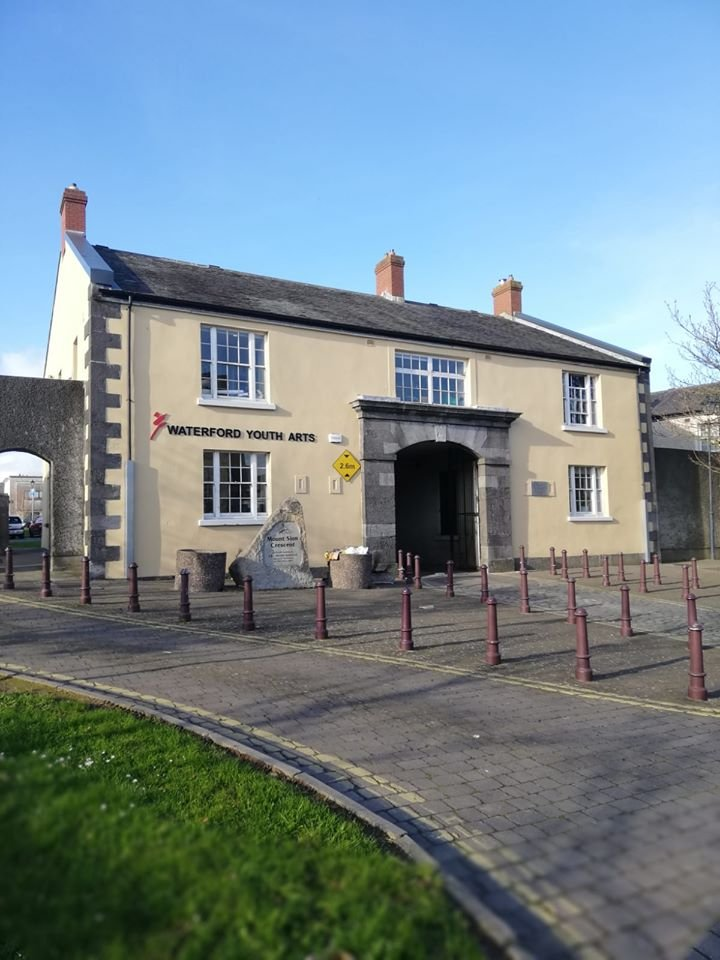
Earlier this month in glorious spring sunshine, a large and representative crowd attended a special commemorative event held in the grounds of Dungarvan Castle to mark 100 years since the takeover of the fortress by the local IRA from British crown forces. It was a memorable and dignified event which rightly honoured the sacrifices of the ordinary men and women of county Waterford in the fight for Irish freedom. Indeed, as a member of the Castle Centenary Committee which organised the event with the support of Waterford City and County Council, I was particularly pleased to meet and talk with many descendants of the Volunteers of both the IRA and Cumann na mBan, all of whom are incredibly proud of the service and sacrifice their family members gave a century ago. The feedback from both attendees and organisers has been wholly positive and I was honoured to have played a small role in it.
Although the focus in the last few weeks has been very much centered on Dungarvan, it should not be forgotten that similarly dramatic scenes were also played out in Waterford City this month one hundred years ago. Indeed, as a noted garrison town with a long tradition of supplying recruits for the British army, as well as the oft-noted political dominance of Redmondism, the takeover of the two military barracks in Waterford (the infantry barracks on the north side of Barrack Street, and the artillery/cavalry barracks on the site of present-day St Carthage’s Avenue), was perhaps of greater symbolic value to the local IRA in terms of demonstrating the very real changes their armed struggle had brought about.

The barracks arch through which British forces departed Waterford City for the last time on 9th March 1922. Courtesy of Catherine Hanrahan
Prior to this however, a remarkable incident occurred north of the Suir, which is worth recalling. Although the British military evacuation was welcomed by all shades of republican opinion, the IRA leadership was greatly concerned by the fact that the departing soldiers would be taking large quantities of arms and ammunition out of the country with them. As Volunteer Moses Roche explained, it was felt ‘…that such a grand opportunity of getting from the British such a large quantity of weapons and ammunition with such little trouble was something which should not be missed’. A ‘friendly Black and Tan’ informed the local IRA that a convoy of around eighty armed RIC officers and Black and Tans would be travelling from Waterford City to Gormanstown Camp, Co. Meath on the morning of 3rd March for disbandment, and the decision was taken to ambush the convoy and take possession of their arms. Paddy Paul, Training Officer for the Waterford Brigade, selected Dunkitt in south Kilkenny as the ambush position.
Using a commandeered lorry, the Volunteers set up a barricade on the road, and sure enough ‘…promptly to time the RIC convoy appeared, consisting of five or six Crossley tenders together with an armoured Lancia’. No resistance was offered, and the ‘ambush’ was over before it had even begun, as described by Roche: ‘The convoy came along in due course and stopped at the barricade. We shouted, ‘Put them up, ye are all covered’. A Black and Tan (probably the man who had given us the tip off) shouted: ‘Stop, boys, they are too many for us’. I remember these words quite well. All the men in the convoy dismounted and put up their hands. They put up no opposition’. Once the Black and Tans were disarmed, they were made drive the lorries to Portlaw, where IRA Volunteers took over and transported the impressive haul of .45 ammunition, rifles, machine guns, revolvers, and grenades to an arms dump in the Comeragh Mountains. The ‘captured’ men were allowed to return safely to Waterford, as explained by Paddy Paul: ‘We were quite friendly with them at this stage and they did not want any trouble either. We stood them several glasses of whiskey before we sent them off in the truck, calculating that we would be out of reach before they could give any information about us in Waterford’.
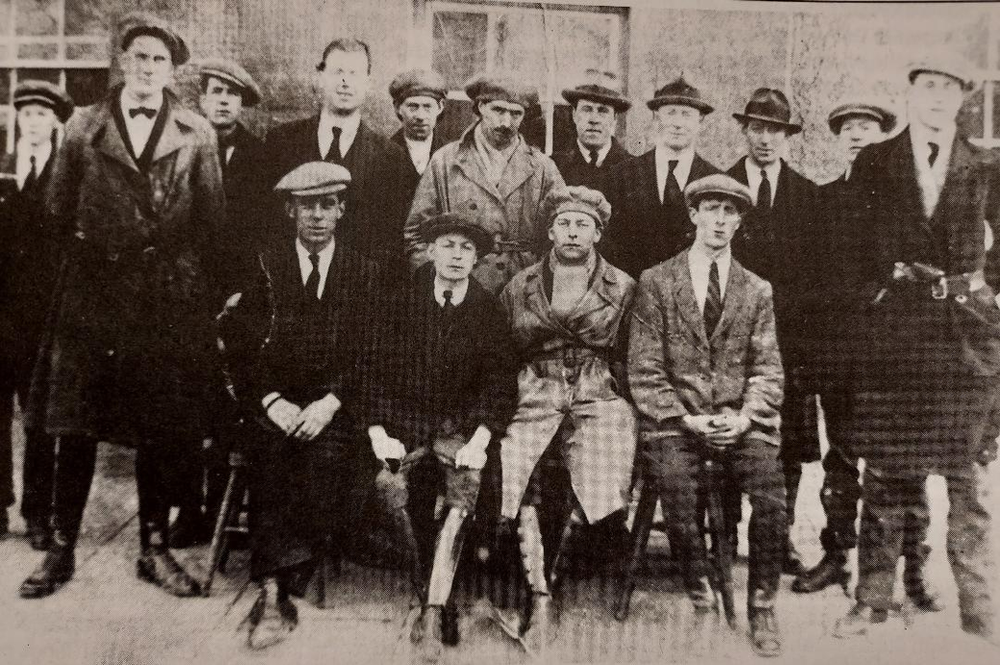
Waterford Brigade IRA at the Infantry Barracks, March 1922. Paddy Paul is seated second from the left, while Philip Grimes (uncle of the famous hurler of the same name) is third from the right standing. Others in the photo include Dan Ennis, Jack Edwards, Jack O’Mara and Moses Roche. Any help identifying the other figures would be greatly appreciated. Source: Poole Collection
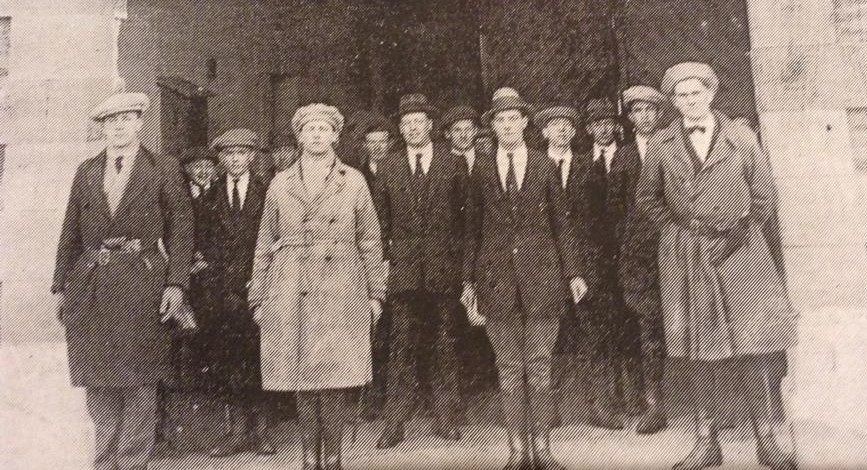
IRA Volunteers under the arch of the Infantry Barracks, 1922. Courtesy of Ollie Breslin
With Dungarvan Castle evacuated five days earlier, Waterford City’s rendezvous with history arrived on Thursday 9th March 1922. The Waterford News reported that most of the Devonshire Regiment, who had been stationed in the two barracks, had left the city on the Great Western steamship service to Fishguard on 31st January. A detachment of the 1st York and Lancaster Regiment temporarily took command of the fortresses in the interim. On the morning of the 9th word spread throughout the city that the final evacuation was soon to occur, and during the afternoon large crowds gathered on Barrack Street. Tricolours were flown from many buildings and a large banner proclaiming ‘God Save Ireland and Sinn Féin’ was displayed. At 3.30pm members of the Waterford Brigade of the IRA arrived in the vehicles seized at Dunkitt, with the delegation led by Pax Whelan, George Lennon, Mick Mansfield, and Jeremiah Cronin. The Munster Express of 11th March states that a Captain Hughes was sent from IRA GHQ and arrived with the delegation to accept the barracks on behalf of the ‘Provisional Government’. Despite this, the garrison in the barracks would take a firm anti-Treaty stance during the Civil War and would use their new premises as key defensive positions during the Siege of Waterford by Free State forces in July.
The Artillery Barracks had been vacated earlier in the day, and at precisely 4pm, Captain Wedgewood formed his men up in the square of the Infantry Barracks, and led by the regimental fife and drum band, marched his men out under the archway and down Barrack Street to the city quays. Along the route, they were met by a mixture of boos and cheers from the crowds who lined the streets. Twenty-four officers, 189 privates, eight horses and ‘30 tons baggage’ boarded the Great Western service to Fishguard, leaving Ireland’s oldest city for the last time. Once they had vacated the barracks, the gates were ‘…quickly shut and barred… and after an interval of fifteen minutes, a small detachment of local IRA entered the barracks to the accompaniment of loud cheering from the crowd outside’.
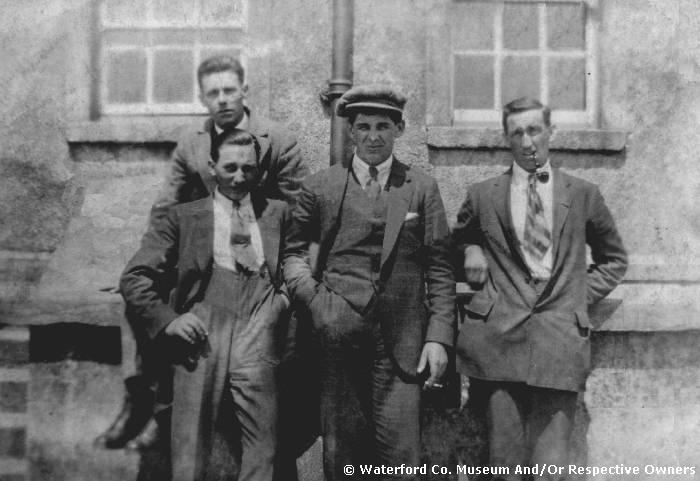
From left to right: George Lennon (back), Moses Roche, James Prendergast and Paddy Power in the barracks square. Courtesy of Waterford County Museum
George Lennon, who would go on to play a key role in the anti-Treaty defence of Waterford during the Civil War, summarised the sense of pride and achievement felt by local republicans: ‘…after the elapse of 750 years, it was our proud privilege to enter the city with native troops and take it back for the Irish nation’. He was also clearly determined to demonstrate that the IRA could be as competent and professional a force as the British army had been: ‘We did not come to the city with any ceremony but drove into the back of the town in lorries and took possession of the Infantry Barracks just vacated by… the British army. The main building of the barracks was the officer’s quarters, two long wings connected from here enclosing a very large barrack square. Other buildings comprised the married quarters, the hospital, the transport shed, the magazine and some other buildings for stores. Just inside the barrack gate was a small building marked Early Treatment Station. This, we speculated was for the precautionary treatment of Venusian diseases; needless to say, we had no use for this exotic place… There was quite a lot of cleaning up to be done after the Devons [sic] and then we got the men into uniform. The sergeant major gave them all the basic drill, and plenty of it, and after that slow-motion guards drill. Soon we had a company of crack troops’.
Just four months later those same barracks would witness some of the fiercest fighting of the Siege of Waterford, as brother turned against brother and comrade fought against comrade in the Civil War. The promise and potential of the revolutionary decade was largely undone by this, the greatest tragedy in modern Irish history. Yet for a few days in March 1922, when the army of the largest empire in the world withdrew from Waterford City and relinquished control of their former domains to the Irish Republican Army, it had seemed as if all things were possible.
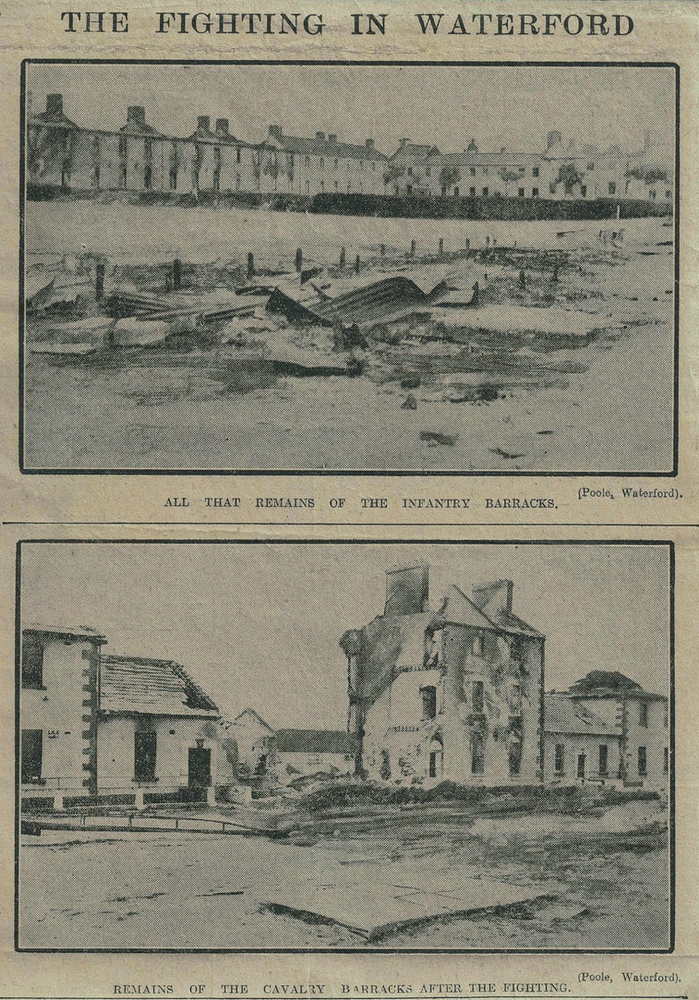
The destroyed remains of the Infantry Barracks (top) and Artillery Barracks (bottom) on Barrack Street, in the aftermath of the Siege of Waterford. Just four months previously they had been handed over by British forces to the local IRA [Cork Examiner, 29 July 1922]


